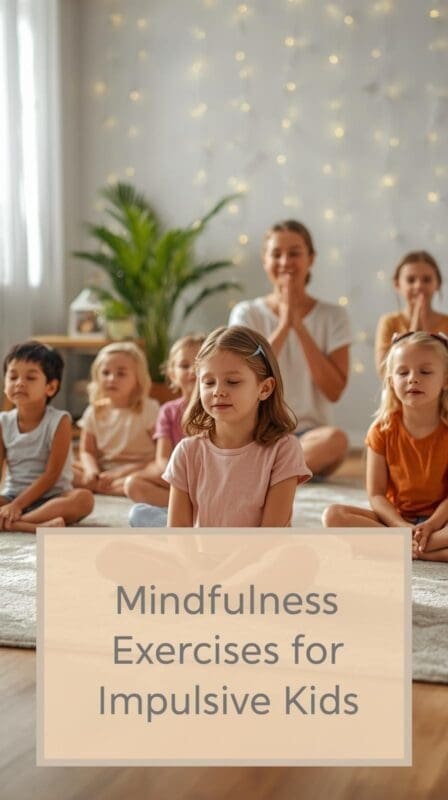Impulsive behavior often comes from acting before thinking — but mindfulness teaches kids to slow down, notice their feelings, and make calmer choices. By practicing breathing and movement exercises, children can strengthen self-control in fun, engaging ways.
Here are simple mindfulness techniques for impulsive kids that parents, teachers, and counselors can use anytime.
1. Balloon Breathing
How it works:
- Ask kids to place hands on their belly.
- Inhale slowly, imagining their belly inflating like a balloon.
- Exhale gently, “deflating” the balloon.
Why it helps: Focuses attention on breathing and slows the body’s rhythm.
2. Star Tracing Breaths
How it works:
- Draw or show a star outline.
- Kids trace along each point while inhaling and exhaling.
Why it helps: Adds tactile movement, making mindfulness accessible for younger children.
3. Animal Movement Pauses
How it works:
- Call out animals (e.g., turtle, butterfly, frog).
- Kids move like that animal, then pause to freeze.
Why it helps: Builds impulse control while keeping practice playful.
4. Five Senses Check-In
How it works:
- Guide kids to name: 5 things they see, 4 things they feel, 3 they hear, 2 they smell, 1 they taste.
Why it helps: Brings awareness to the present moment and reduces reactivity.
5. Breathing Buddies
How it works:
- Kids lie down with a stuffed animal on their stomach.
- Watch the buddy rise and fall with each breath.
Why it helps: Visual feedback encourages steady, mindful breathing.
6. Mindful Movement Flow
How it works:
- Lead slow stretches like reaching arms overhead, bending forward, or twisting side to side.
- Pair each movement with deep breaths.
Why it helps: Combines body awareness with calm breathing for full regulation.
Final Thoughts
Mindfulness doesn’t have to be complicated. With breathing buddies, star tracing, and playful movement pauses, impulsive kids learn how to pause, breathe, and respond calmly. The more they practice, the easier it becomes to carry these skills into everyday life.
Explore related resources:

About the Author
Hi, I’m Eve, a former school counselor with a master’s degree in School Psychology and a passionate advocate for children and families navigating sensory challenges. As a mom of children with sensory sensitivities, I deeply understand the journey special-needs parents face, and I dedicate myself to researching and sharing practical solutions to help children thrive and feel comfortable in their bodies. My goal is also to empower counselors, therapists, and psychologists with creative strategies and supportive resources to enrich their everyday practice. When I’m not writing or exploring new therapeutic approaches, you’ll find me spending quality time with my family and continually seeking inspiration from everyday moments.



